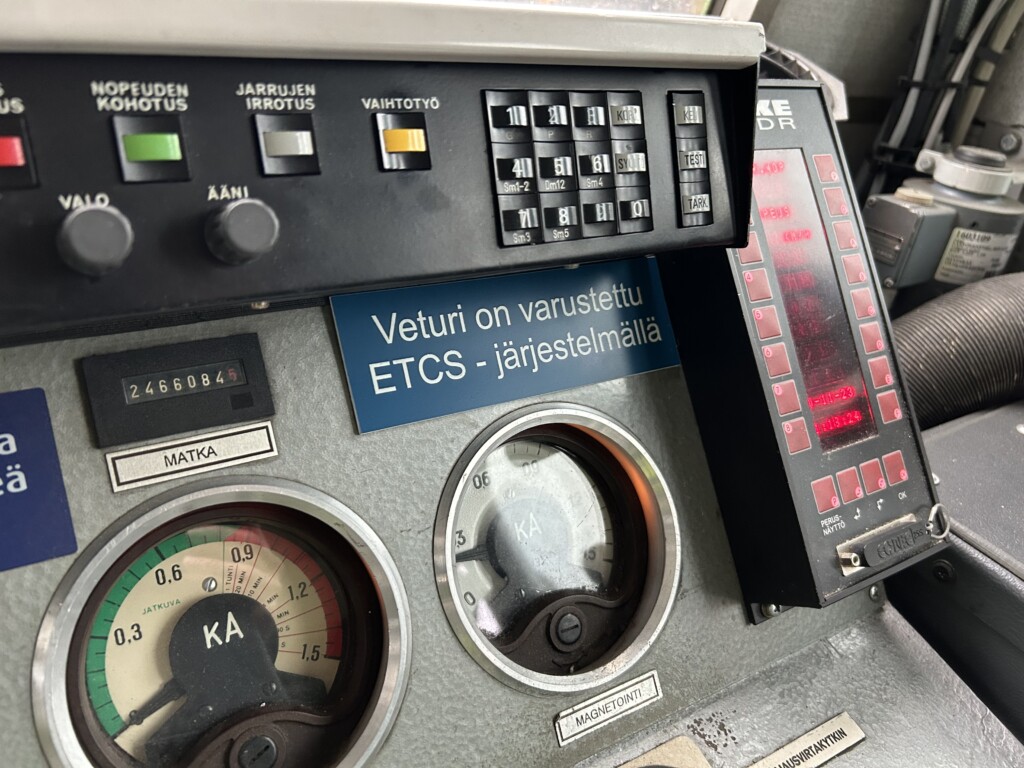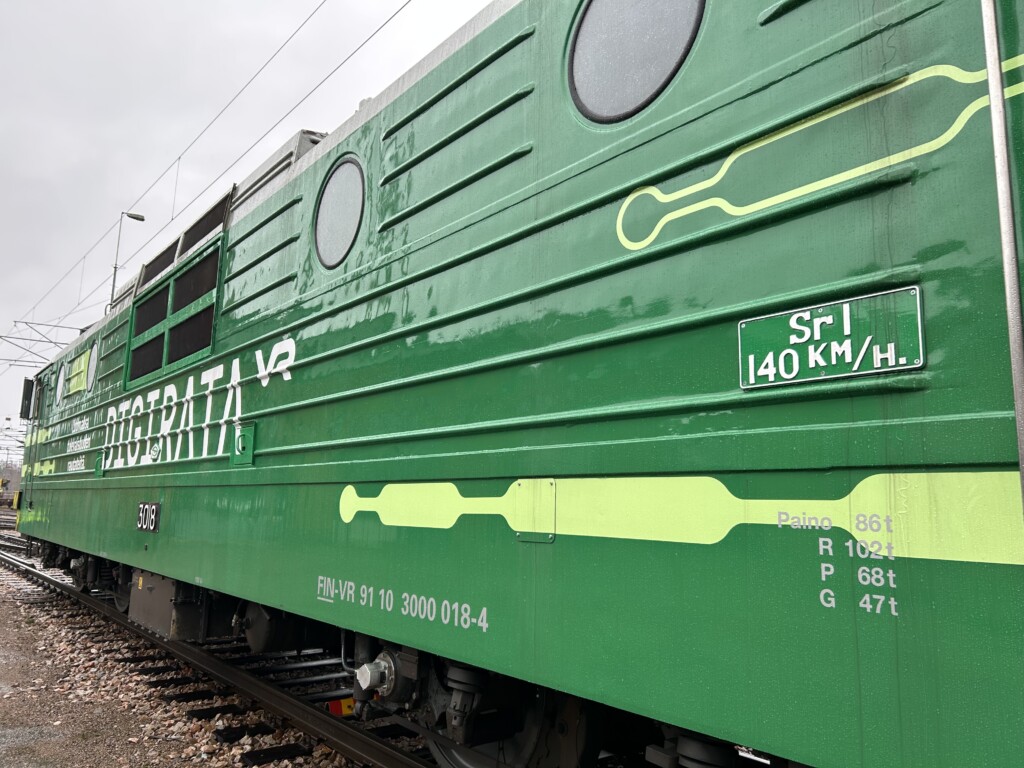The Digirail test locomotive is now ready, and the test runs of the test track are about to start. The Digirail Sr1 test locomotive is the first locomotive fitted with modern, radio-network-based ETCS train control equipment. The test locomotive will be operated on the ETCS test track, where the functionality of both the locomotive and trackside equipment as well as the traffic management systems will be tested.
The Digirail Sr1 test locomotive is now ready. The commissioning of the locomotive and the start of the test runs on the test track were celebrated at the Kouvola depot on Friday, 10 November. The Sr1 test locomotive was originally an electric locomotive commissioned in the 1970s; and in the past, it has been used for both freight and passenger transport. With the new transducers, radars and sensors installed on the locomotive, it has become the first locomotive in Finland fitted with modern ETCS equipment (European Train Control System) based on the radio network.
Digirail is a necessary green replacement investment that will improve railway capacity and enable the growth of rail transport. Finland’s current train control system (JKV) is approaching the end of its lifecycle. EU regulations also require the systems to be harmonised.
VR’s fitters Ilpo Lavonen and Tomi Koso started installation work on the electric locomotive in June. The duo finished their work in the autumn, when testing was also began on the installations. The ETCS train control equipment is supplied by Thales Group. This programme has been commissioned by the Finnish Transport Infrastructure Agency in close co-operation with VR.

“VR’s fitters and the entire project team have done great work. The ETCS installation work was carried out on an almost 50-year-old locomotive and there were many technical surprises and details along the way, but practical solutions were always found. It is precisely the installation work that has taught us more about the ‘Yes, we can’ attitude that is so important for the success of the entire national Digirail project. The practical lessons learned from the installations have also been documented along the way, and they will be utilised in the future,” says Jonas Eriksson, Vice president, ERTMS Programme at VR.
Test runs on the test track started in November on the Kouvola–Kotka–Hamina test track section (KoKoHa).The test locomotive was operated for the first time in the first week of November. The test runs carried out during commissioning inspections ensure that the system operates in accordance with the requirements and that it is safe.
“The test track has been built so that we could gain experience of ETCS operation in an actual railway environment. In addition, the practical installation work of the test locomotive, such as preliminary design, installation and co-operation, have taught us many lessons for the future. The co-operation honed in the KoKoHa project will help in the implementation of the national project, which is the most important goal of the test track,” says Eriksson.
“We are very happy to have been able to offer the European Railway Traffic Management System (ERTMS) solution for the KoKoHa project. The first ETCS level 2 installation in Finland and the first use of commercial 5G networks globally have proceeded at a fast pace. It has been great to work together with the Finnish Transport Infrastructure Agency, VR and Digirail. Getting the job done on time would not have been possible without the aforementioned ‘Yes, we can’ attitude”, says Konrad Knuts, Assistant Project Manager at Thales.
Finland is a pioneer
The test locomotive communicates with safety systems via commercial radio networks. Elsewhere in Europe, GSM-R (Global System for Mobile Communications – Railway) networks have been used, which are radio networks built specifically for traffic control. Finland is a pioneer in Europe, as Finland has already succeeded in utilising existing commercial radio networks.
“This is an important milestone for Digirail and Finland as a whole. We have been able to show that the use of commercial radio networks is actually possible in practice. This is also a great success from this point of view,” says Jere Puska, Project Engineer at the Finnish Transport Infrastructure Agency.
The extensive Digirail project is renewing the entire infrastructure of the railway control and signalling system: automatic train control, interlockings, control devices and the radio network.
Test runs on the test track will be run throughout the following year. With regard to VR, the procurement process for equipping the rolling stock in commercial operation is also in progress. The aim is to have a sufficient amount of rolling stock for the needs of the first commercial track by 2027.


